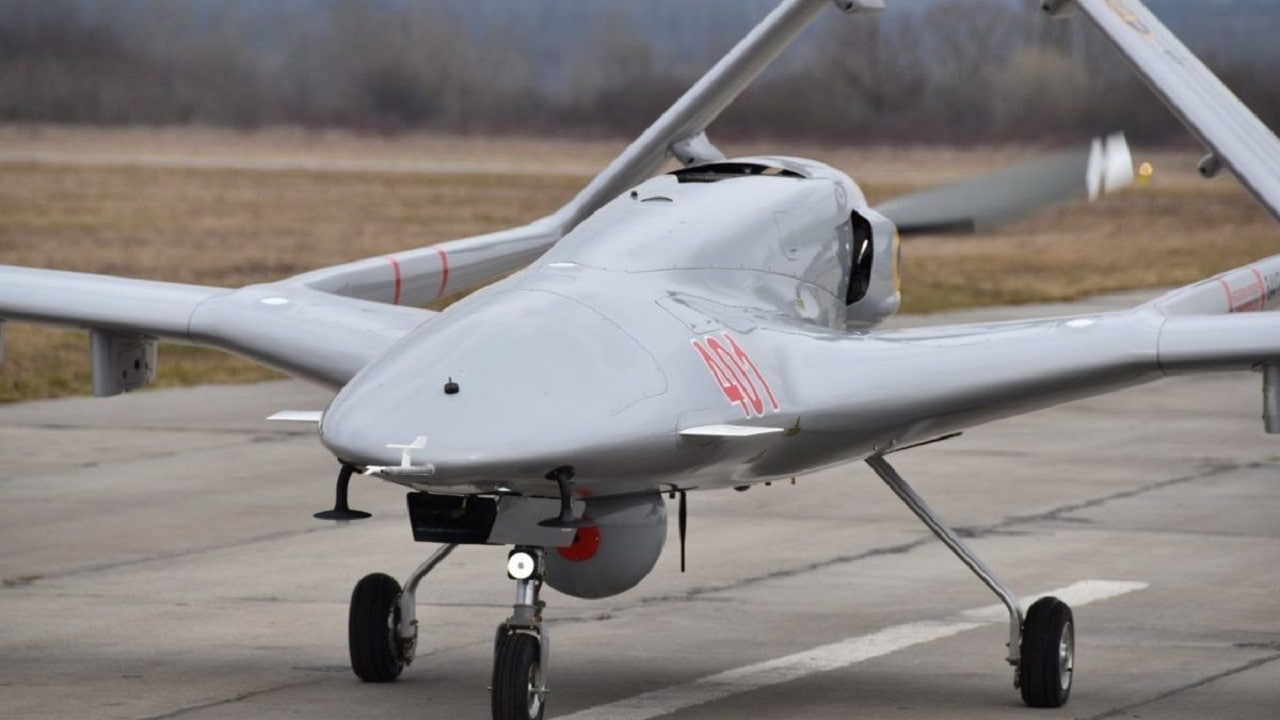What You Need to Know About the TB2 Drone – In the early days of the Russian invasion of Ukraine, Ukrainian fighters relied heavily on its supply of Turkish-made TB2 drones to carry out attacks on invading Russians. The Bayraktar TB2 unmanned aerial vehicle has been used in several low-tech conflicts in the past. They are cheap, effective devices that have been sold to Ethiopia, Morocco, Libya, and Azerbaijan.
As time has passed and Russian aggression escalated, however, Ukrainian fighters have relied increasingly on American-made drones supplied in their thousands over the last two months.
Nonetheless, TB2 drones are still in use by Ukrainian fighters and have played a substantial role in the country’s ability to fight back.
What is the TB2 Drone?
The Bayraktar TB2 is a medium-altitude unmanned aerial vehicle that was first deployed in 2014. A Turkish drone primarily used by the Turkish Armed Forces, the drone has been used in several conflicts.
TB2 drones have performed strikes in Iraq and Syria and were adopted by the Azerbaijan military in 2020.
The drone is an unmanned aerial vehicle controlled by a ground crew. It is used for both surveillance and munition deployment.
TB2 Specs
The TB2 drone is operated by three people at its ground control station, it can deliver a payload of 150kg, and has a fuel capacity of 300 liters. Powered by gasoline, the drone is fitted with a Rotax 912-iS internal combustion engine and has a wingspan of 12m. It is 6.5m long, has a maximum speed of 220 km/h, and has a range of 4,000 km.
Its operational altitude of 18,000 ft also makes it more difficult to spot while in the air, and it can fly for as long as 27 hours.
The drone can also be fitted with the following missiles:
MAM-C/MAM-L (guided bombs)
Advanced Precision Kill Weapon System (70mm laser-guided rocket)
TUBITAK-SAFE TOGAN (81mm mortars)
TUBITAK-SAFE BOZOK (laser-guided rockets)
L-UMTAS (anti-tank missile system)
Roketsan Cirit (70mm missile system)
Is It Good Enough to Beat Russia?
Russia’s tactical air superiority means that, while drones can be useful for Ukraine, they can be shot down by fighter jets. Small drones have proven advantageous for the Ukrainian military, but TB1 drones are not invincible and can be both detected and shot down.
The TB2’s range means that they will often be deployed within the range of Russian artillery, meaning that as soon as they are detected, Russia can take action to down these unmanned aerial vehicles.
Combined with the fact that the production of these Turkish drones is not quick, it’s not possible to resupply the Ukrainian military with new TB2s as fast as they need.
Jack Watling from the Royal United Services Institute of London told the Associated Press that the drones “shouldn’t be making a meaningful impact” in the war because of their many limitations.
“The (TB2s) shouldn’t be making a meaningful impact because they are medium-altitude, slow-flying aircraft with a large electromagnetic signature and a large radar cross-section,” Watling said. “And the Russians have very capable air defense systems, so they should be being shot down. The terrain is very open and gives good radar coverage.”
Jack Buckby is a British author, counter-extremism researcher, and journalist based in New York. Reporting on the U.K., Europe, and the U.S., he works to analyze and understand left-wing and right-wing radicalization, and reports on Western governments’ approaches to the pressing issues of today. His books and research papers explore these themes and propose pragmatic solutions to our increasingly polarized society.

